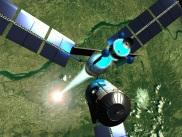I will try those steps, but there is a major difference between using the sprites alone and using them as a fuel source.
I emailed Epic and asked them three questions:
1) Fine control of particle emission in a Niagara System: Is it possible (through Blueprints) to emit a single particle with arbitrary location and velocity somewhere within the simulation grid? This is pretty much the finest level of control that there could be. I don't need to know how to do it, just whether or not it's possible.
2) Texture sampling: Is it possible (through Blueprints) to read back the simulation density and temperature textures from the GPU? For example, I wish to know the temperature at the centre of an actor, to determine if said actor is suffering heat damage. Again, I don't need to know how to do it, just whether or not it's possible.
3) Hardware ray tracing: From what I understand, if I obtain an nVidia RTX 2000 series or better video card, then I will be able to support ray tracing on the hardware. If I enable ray tracing in my project, will the Niagara fluid simulations cast light and project shadow onto the scene? Likewise, will the fluid simulation be lit up from the inside, if a light is placed at the centre of, say, a screen-filling cloud of smoke? I'm totally going to steal all of the effects from Star Wars and Harry Potter, and put them into a spaceship shoot 'em up game. Time is not really of the essence, because I don't care if I'm beaten to the punch, plus my project will be open source, for all to experiment with.
Hopefully the answer to all of these questions is "yes".








